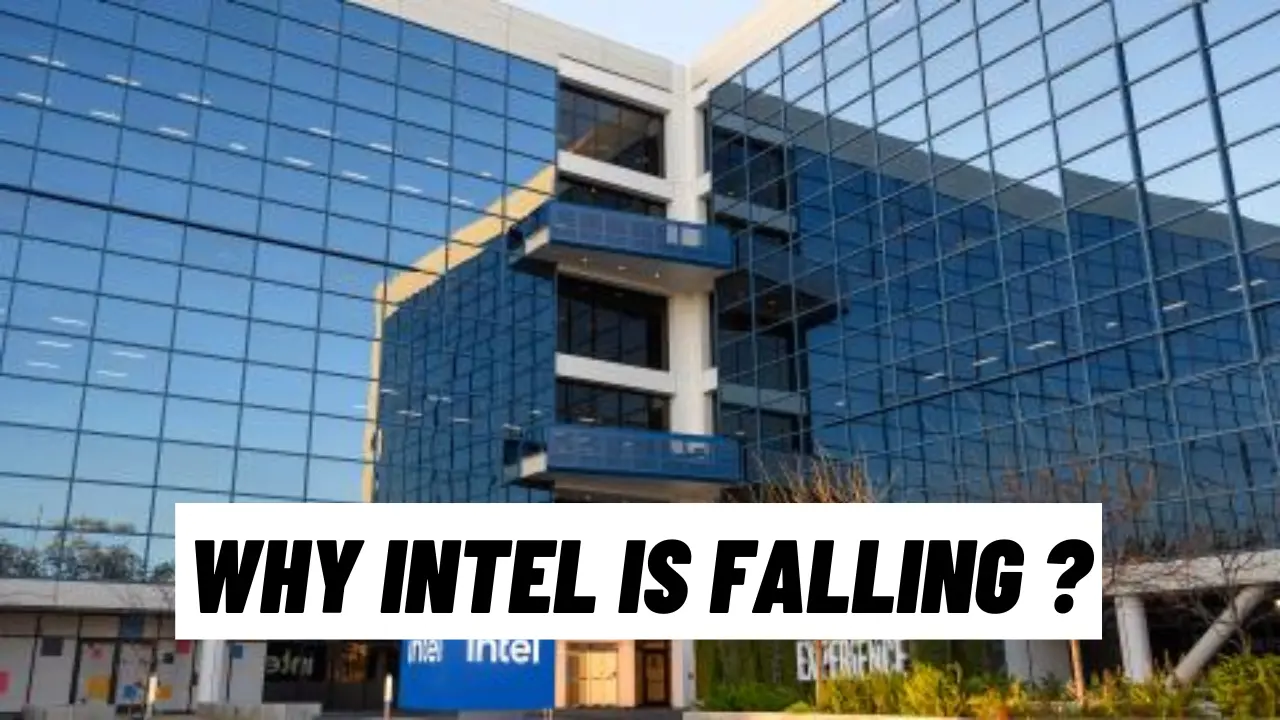Intel, once the undisputed leader in the semiconductor industry, has found itself in a challenging position over the past few years. The company’s stock has experienced a significant decline, leaving investors and tech enthusiasts wondering what went wrong. In this blog, we’ll explore the key reasons behind Intel’s struggles and what this means for the future of the tech giant.
1. Increased Competitive Pressure
One of the most significant factors contributing to Intel’s decline is the intense competition it faces from rivals like AMD, NVIDIA, and ARM-based chipmakers. AMD, in particular, has emerged as a formidable competitor, gaining substantial market share with its Ryzen and EPYC processors. These chips have been praised for their superior performance, energy efficiency, and value, putting Intel under immense pressure.
NVIDIA’s advancements in graphics processing units (GPUs) and ARM’s growing influence in mobile and custom silicon markets have further eroded Intel’s dominance. The rise of ARM architecture, especially with companies like Apple transitioning to their own ARM-based chips (e.g., the M1), has highlighted Intel’s vulnerability in a rapidly evolving industry.
2. Technology Delays
Intel’s technological struggles have been well-documented. The company has faced repeated delays in transitioning to smaller, more advanced manufacturing processes. The shift from 14nm to 10nm, and subsequently to 7nm, has been fraught with challenges. These delays have allowed competitors like AMD and TSMC to forge ahead with more advanced process nodes, offering better performance and efficiency.
The delay in adopting cutting-edge technology has not only hurt Intel’s competitive position but also shaken investor confidence. In an industry where being at the forefront of innovation is crucial, Intel’s lag has been a significant setback.
3. Loss of Market Share
As a result of these technological delays and increased competition, Intel has seen a notable decline in market share, particularly in the CPU market. AMD’s resurgence with its Ryzen processors has eaten into Intel’s dominance in both consumer and enterprise segments. In the data center market, Intel’s Xeon processors have also faced stiff competition from AMD’s EPYC chips, leading to a loss of customers and revenue.
This erosion of market share is a direct consequence of Intel’s inability to innovate at the same pace as its competitors. The company’s once-unassailable position is now under threat, and regaining lost ground will be a significant challenge.
4. Financial Underperformance
Intel’s financial performance has also taken a hit, with the company reporting weaker-than-expected earnings in several recent quarters. Revenue growth has stalled, particularly in key segments like data centers, where the competition is fiercest. The decline in profitability has raised concerns among investors about the company’s ability to maintain its market leadership and drive future growth.
Moreover, Intel’s decision to invest heavily in new fabs and manufacturing facilities, while necessary for long-term competitiveness, has raised questions about short-term financial returns. These investments are capital-intensive and may take years to pay off, adding to the uncertainty surrounding Intel’s financial outlook.
5. Leadership Changes and Strategic Shifts
Intel has undergone several leadership changes in recent years, contributing to uncertainty about its strategic direction. The appointment of Pat Gelsinger as CEO in 2021 was seen as a positive step, given his deep technical expertise and understanding of Intel’s culture. However, turning the company around will require time, and the market’s patience may be wearing thin.
Intel’s recent strategic shift towards becoming a more diversified technology company, including a greater focus on foundry services, AI, and custom silicon, reflects the company’s recognition of its challenges. However, executing this strategy successfully will be crucial in determining Intel’s future trajectory.
6. Broader Market Conditions
It’s also important to consider the broader market conditions that have impacted Intel’s stock price. The tech sector as a whole has been volatile, with concerns about inflation, interest rates, and global supply chain disruptions weighing on investor sentiment. Intel, like many other tech companies, has not been immune to these macroeconomic factors.
7. The Road Ahead for Intel
Despite the challenges, Intel remains a key player in the semiconductor industry, with significant resources at its disposal. The company’s commitment to investing in new manufacturing capabilities and its focus on next-generation technologies could position it for a comeback. However, the road ahead is fraught with challenges, and Intel will need to execute flawlessly to regain its former glory.







